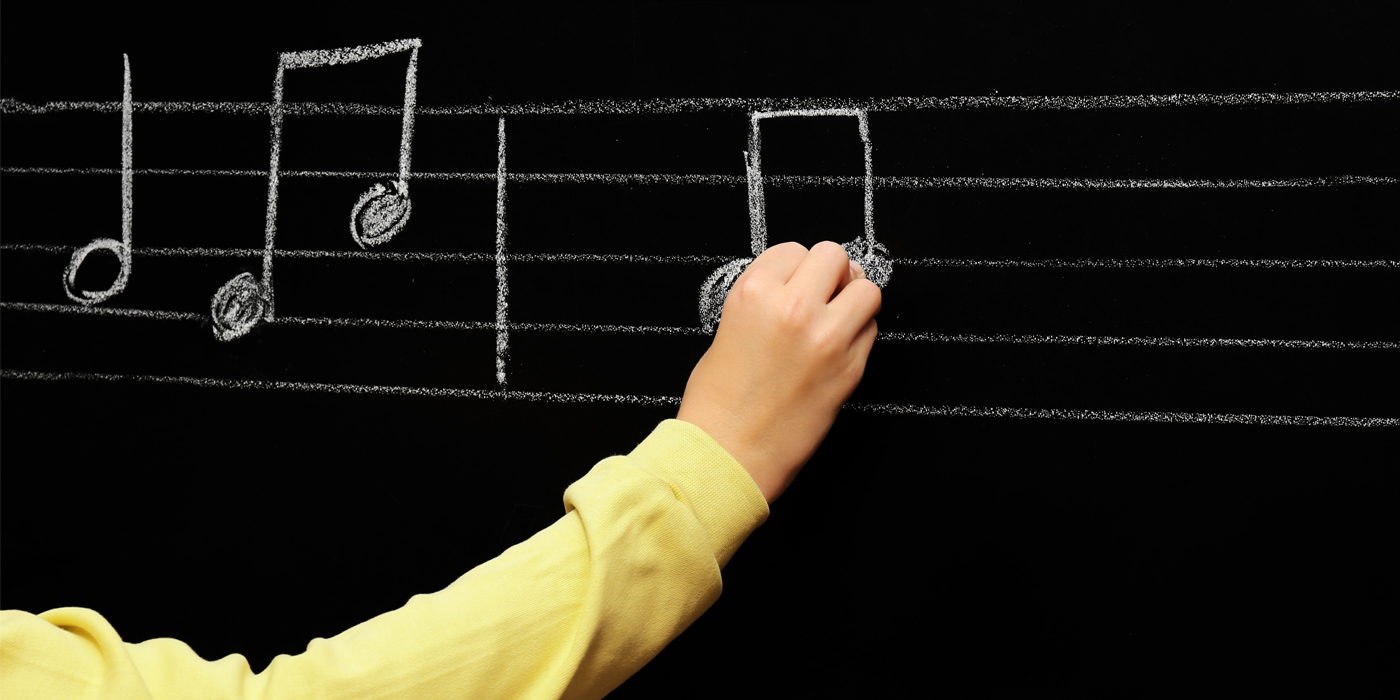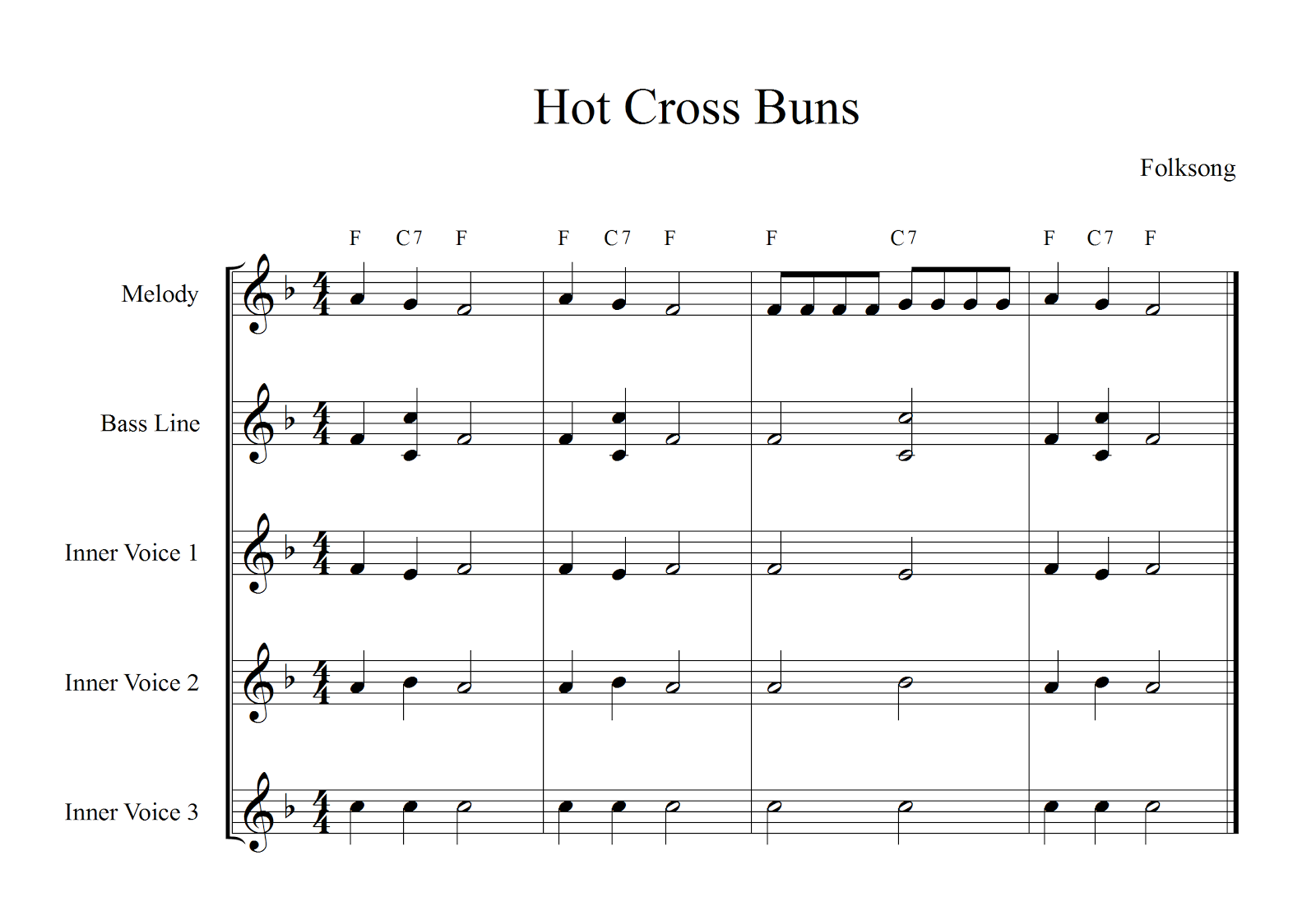
I have always felt that introducing students to composition can dramatically improve their ensemble experience. NAfME agrees. The following is from the NAfME website pertaining to the National Core Arts Standards on the “Opportunity-to-Learn Standards as Needs Assessment for Ensembles at the Elementary and Secondary Grades” page:
The curriculum emphasizes the Performing process but also provides experiences in Responding and Creating to enable students to understand these two processes and their components, allowing them to transfer what they have learned in the area of Performing.
Many educators fear that spending rehearsal time teaching students to create and respond to music will simply reduce the time they have for concert preparation. It is my experience that spending time on these broader aspects of music produces better musicians. It produces musicians who can do more than simply play the correct notes. It produces musicians who can self-correct, consider balance, and recognize harmonic elements.
These skills ultimately make for better performances.
The Problem
Although I have always valued teaching students all aspects of music, my personal efforts to meet the “Creating” standards have not always been as successful as I would like.
In the past, I would hand out a blank piece of staff paper with instructions to create an eight-measure melody. Passing grades were given to anyone that put the correct number of beats in each measure. Even though the majority of the kids were able to successfully complete this task, the work they turned in was not very palatable. One year, I took a chance by including the instruction “while remaining in one specific key” in an effort to improve the results. Students were simply required to end on “Do.” The results weren’t much better but at least their melodies had some type of closure.
The Solution
After much reading, collegial discussions, and massive amounts of trial and error, my coworker, Mr. Terrence Bacon, and I created a lesson plan designed to help students create meaningful musical compositions. The lesson is designed to be accessible for all age levels. Our approach is to teach composition through improvisation by creating short melodies based on a given chord progression.
Please understand that by “improvisation” I don’t mean jazz improvisation. I am simply referring to a process of creating melodies based on some basic constraints. It is something we are all capable of.
This lesson plan can be accomplished during regularly scheduled instrumental rehearsals. I am certain the process can be adjusted for a vocal group rehearsal or any music class as well.
The Plan: Step One
The process begins by teaching a given melody by rote using call and response. Choosing a simple recognizable tune at a level appropriate for your students is imperative. Melodies I’ve used with success include Hot Cross Buns, Heart and Soul, When the Saints Go Marching In, and C Jam Blues.
This should be the easy part for everyone. If it is long, or your kids are new to the process, break it into small chunks and teach them individually.
I strongly encourage you to not write the melody down for students. Some students believe that if it’s not written on paper, it is not music. This belief must be overcome. If writing something is absolutely necessary, consider using non-traditional notation. Let students use their ears and brains to complete the assignment, not their eyes.
Also, be sure to give them the necessary time to process your request. Call and response may not be instant for many students but it improves with repetition. As confidence increases, you may want to try changing the key (age appropriate) to help the students start hearing tonal relationships instead of specific pitches.
Step Two
The next step is to play or sing a simple bass line while students are playing/singing the melody. This is a very important step in the process and should be repeated until everyone’s comfort level is high. When the group is ready to move on, you can start introducing students to the inner voices in the chord.
Here’s an example of what the parts might look like: 
Again, I wouldn’t share this notation with my students.
In time you can begin to introduce different rhythms for the bass line without changing the progression. You can include vocalizing the solfege for the bass line and having the kids respond in kind. Change the key often.
Remember to give your students time to figure things out for themselves before helping them. Students will progress at different speeds. Differentiate your instruction as needed to continue challenging the advancing students at the same time you are supporting the students taking a little longer.
Now that the students are rhythmically improvising, you can begin vocalizing call and response patterns using a neutral syllable first, then moving on to solfege. For example, in a tonic/dominant song like “Hot Cross Buns” you can teach that a tonic chord is any combination of the 1st, 3rd, and 5th notes of the scale while singing a variety of patterns on “Ba”. When the student can vocally repeat the patterns, you can move on to the dominant chord and eventually switch to solfege. For example, “A dominant chord is any combination of Sol, Fa, Re, or Ti.” Continue to sing short examples of a variety of combinations and have the kids sing them back.
After the kids can imitate, have them create their own combinations by “responding” something different than your “call.”
Applying Melodies to Instruments
The next step is to have students perform this music on their instruments. Once they become very comfortable with melody and chord tones you can have them create new and interesting rhythms on those chord tones. This is also a good time to introduce a consistent accompaniment for them to play along with.
You can continue to use the band for this, assigning different sections bass line and inner voice parts. Another option is to use an electronic keyboard that has accompaniment files already programmed into it. This way you can change the accompaniment styles like rock, swing, Latin, etc. easily. This will get the kids used to creating with a variety of musical styles.
Next Steps
If you choose to go on, start exploring passing and neighboring tones to make student melodies flow a little better. Demonstrate and instruct them to play the non-harmonic notes in between the notes of the chord. This step gets easier and better with repetition.
In our district, the kids all have access to MakeMusic Cloud. We use it to give the kids an opportunity to continue practicing the above skills at home and at their own pace. If the tune is not already found in MakeMusic Cloud, I create accompaniment files (or even just bass lines) and assign them.
We let the kids know that their assessment will be based on how many minutes they practice the assignment/skill as well as the end result. We use a “step rubric” to assess individual student progress.
The goal is to get students farther along on the rubric instead of grading each performance as a separate entity. Their report card grade, if applicable, is based on improvement and effort, not results.
Adding Notation
Once kids are composing, the next step is to get the melodies notated. You might start the process by having the group select their favorite melody, and writing it down as a group. I like to use this time to talk about best practices so the kids can get even more out of the assignment. I demonstrate things like drawing clef signs, stem direction, the order of flats in a key signature or any other detail.
It is also possible, as a follow-up activity, to have the kids use Finale or any of the other notation software programs available to write their melody in school or at home. Advanced students can add the accompaniment in a given style. Everyone turns in a final project based on their individual ability.
Additional Opportunities
The creation and notation of melodies opens up another opportunity; the chance to discuss what makes one melody better than another. The National Standards refers to this as “Responding.” Students may give answers like “I like the way it flows instead of hops” or “I like the way it seems to have a beginning, middle, and end.” Most answers will come from things you have said while preparing students to get to this level. You can also apply these discussions to melodies in the band music you are working on.
If you choose to go even further into the process, have the students keep digital copies of their melodies. Talk to them about form: sonata, verse/chorus, ABACA, theme and variations, etc. Next apply form to the group’s favorite student compositions. Cut and paste melodies to create an entire piece. Have your group pick a style, create a rhythm for the bass line and inner voices and assign parts based on timbre.
Consider printing out the finished work and performing it at your end of the year concert.
Final Thoughts About Implementation
It is important to think of this long-term lesson plan as a process rather than a single assignment. Don’t spend more than ten minutes per rehearsal on any step. I like to limit it to five minutes and usually incorporate it into my planned warm-up procedure.
If I find that my students are struggling at any step, I will repeat that step the next rehearsal. I may have to repeat it several times or even simplify it until students are comfortable. Be sure to make it fun. Just like teachers at a workshop, kids are timid about trying something new (and possibly uncomfortable) in front of peers. Ease their minds and eliminate those concerns slowly. It gets easier every time.
It goes without saying that your comfort level is important too. Only take steps you yourself are comfortable with and practice your part before attempting to teach and/or demonstrate it.
Results
Over the past few years, my students have become better over-all musicians. The process gets quicker every time we do it. I have even kept some of the better melodies and have used them to create sight-reading examples.
A handful of students have composed entire works for concert band, jazz band, and chamber groups. One band worked together to create their own arrangement of a popular tune by listening to it in small sections, figuring out the melody and chord progression on their own, listening for the form, and assigning parts.
Most importantly, my group sounds better than it ever has. Preparing music for concerts is less time consuming and our performance level has improved. As a group, we have developed a new level of trust. We encourage risk taking, critique our own work, help each other grow, listen to what is happening around us, and play more musically.
All in all, it has been well worth the effort.
References:
Azzara, Christopher D. & Grunow, Richard F. (2006). Developing Musicianship Through Improvisation. Chicago: GIA.